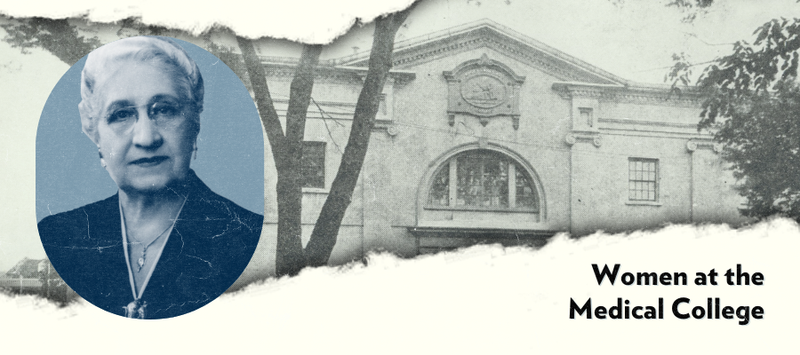
<br/>
<br/>
The Medical College of South Carolina began to consider allowing women as students in the 1890s, and perhaps even earlier in the 1880s.
<br/>
Official faculty and board minutes in 1885 indicate some recognition at the college of women in the profession. A physician in Georgia had asked the college to confirm the endorsement of a female doctor claiming to have the support of the Medical College. While the administration was unwilling to endorse her, they did admit they had “offered her a Room to exhibit in.”
<br/>
While there is no indication of any debate over allowing women as students in the 1880s, clearly the college had allowed a woman medical doctor to have space at the college, even if they did not fully endorse her credentials. College records from this time period remain sparse, but even if there is no direct evidence of early consideration, it is likely the decision to allow women started here.
<br/>
Still, the college faculty and the dean—the lead administrator of the college equivalent to president today—had been receiving letters of applications from women hoping to study at the college and in early 1894 they began considering accepting the applicants. The decision to allow women came after a few months of debate and resolutions. The faculty discussed the topic in meetings in March and April, and then on May 31, the dean, Dr. Francis LaJeau Parker, indicated an interest in stating in the catalogue that the college admits women. While some faculty opposed allowing women, the majority supported it and the resolution passed.
<br/>
There are no clear statements of why the Board decided to support women applicants. Perhaps there was hope for financial renumeration from an influx of women who never materialized. Or, perhaps, in the discussions about modernizing curriculum, altering the academic calendar, and other changes being discussed, it seemed logical for women to enter as students.
<br/>
The first female students to finish their studies entered the college in 1897 and graduated in 1901 after fulfilling all the requirements—Love Rose Hirschmann Gantt and Emilie Melanie Viett Rundlett.
<br/>
Even as the catalogue noted women being allowed in the college and earning the credential of physician, however, the annual announcements and listed requirements for graduation still used the masculine pronouns. It would be well into the twentieth century before that would change.
<br/>
Watch our video for additional information:
<br/>
